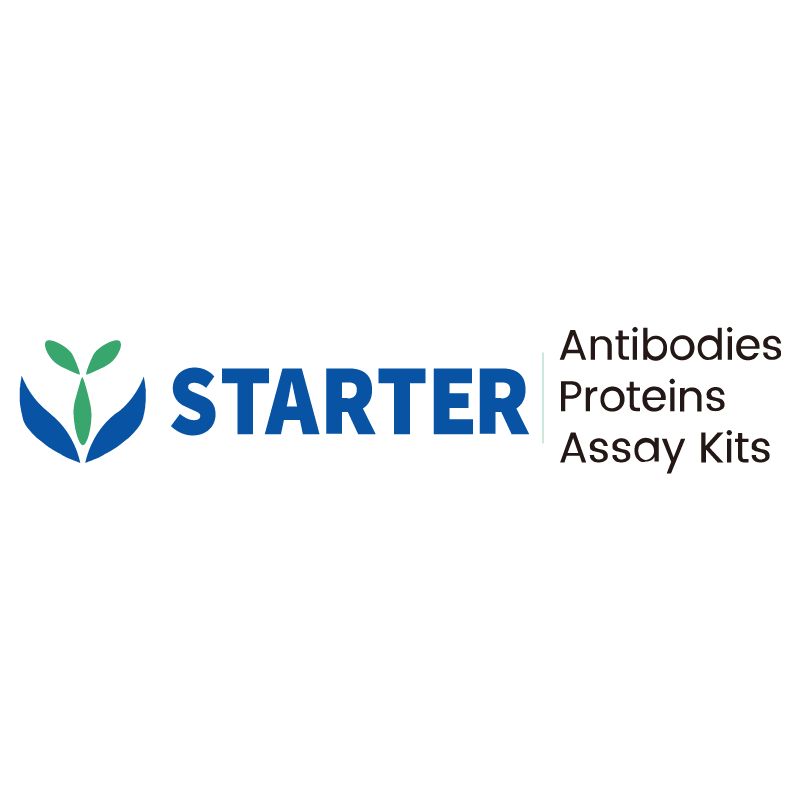WB result of TMEM106B Recombinant Rabbit mAb
Primary antibody: TMEM106B Recombinant Rabbit mAb at 1/1000 dilution
Lane 1: unboiled Raji whole cell lysate 20 µg
Lane 2: unboiled PANC-1 whole cell lysate 20 µg
Negative control: unboiled Raji whole cell lysate
Secondary antibody: Goat Anti-rabbit IgG, (H+L), HRP conjugated at 1/10000 dilution
Predicted MW: 42 kDa
Observed MW: 40, 80 kDa
Product Details
Product Details
Product Specification
| Host | Rabbit |
| Antigen | TMEM106B |
| Synonyms | Transmembrane protein 106B |
| Immunogen | Recombinant Protein |
| Location | Lysosome, Endosome, Cell membrane |
| Accession | Q9NUM4 |
| Clone Number | S-2362-33 |
| Antibody Type | Recombinant mAb |
| Isotype | IgG |
| Application | WB, IHC-P, ICC |
| Reactivity | Hu, Ms, Rt |
| Positive Sample | PANC-1, HeLa, A549, HepG2, Jurkat, NIH/3T3, mouse brain, PC-12, rat brain, COS-7 |
| Purification | Protein A |
| Concentration | 0.5 mg/ml |
| Conjugation | Unconjugated |
| Physical Appearance | Liquid |
| Storage Buffer | PBS, 40% Glycerol, 0.05% BSA, 0.03% Proclin 300 |
| Stability & Storage | 12 months from date of receipt / reconstitution, -20 °C as supplied |
Dilution
| application | dilution | species |
| WB | 1:1000 | Hu, Ms, Rt, Mk |
| IP | 1:500 | Hu |
| IHC-P | 1:100-1:500 | Hu, Ms, Rt |
Background
TMEM106B is a 274-amino-acid type II transmembrane protein embedded in late endosome and lysosome membranes, most highly expressed in central nervous system neurons and oligodendrocytes, where it critically influences lysosomal morphology, trafficking, and clearance of misfolded proteins; genetic variants—especially a threonine-to-serine polymorphism at residue 185—modulate its expression and stability and constitute major risk factors for frontotemporal lobar degeneration with TDP-43 pathology and other neurodegenerative disorders, while its C-terminal luminal domain can be proteolytically released by lysosomal cysteine proteases to form amyloid fibrils that accumulate not only in diseased but also in aged cognitively normal brains, thereby linking lysosomal dysfunction, myelin lipid dysregulation, and protein aggregation to neurodegeneration.
Picture
Picture
Western Blot
WB result of TMEM106B Recombinant Rabbit mAb
Primary antibody: TMEM106B Recombinant Rabbit mAb at 1/1000 dilution
Lane 1: unboiled HeLa whole cell lysate 20 µg
Lane 2: unboiled A549 whole cell lysate 20 µg
Lane 3: unboiled HepG2 whole cell lysate 20 µg
Lane 4: unboiled Jurkat whole cell lysate 20 µg
Secondary antibody: Goat Anti-rabbit IgG, (H+L), HRP conjugated at 1/10000 dilution
Predicted MW: 42 kDa
Observed MW: 40, 80 kDa
WB result of TMEM106B Recombinant Rabbit mAb
Primary antibody: TMEM106B Recombinant Rabbit mAb at 1/1000 dilution
Lane 1: unboiled NIH/3T3 whole cell lysate 20 µg
Lane 2: unboiled mouse brain lysate 20 µg
Secondary antibody: Goat Anti-rabbit IgG, (H+L), HRP conjugated at 1/10000 dilution
Predicted MW: 42 kDa
Observed MW: 40, 80 kDa
WB result of TMEM106B Recombinant Rabbit mAb
Primary antibody: TMEM106B Recombinant Rabbit mAb at 1/1000 dilution
Lane 1: unboiled PC-12 whole cell lysate 20 µg
Lane 2: unboiled rat brain lysate 20 µg
Secondary antibody: Goat Anti-rabbit IgG, (H+L), HRP conjugated at 1/10000 dilution
Predicted MW: 42 kDa
Observed MW: 40, 80 kDa
WB result of TMEM106B Recombinant Rabbit mAb
Primary antibody: TMEM106B Recombinant Rabbit mAb at 1/1000 dilution
Lane 1: unboiled COS-7 whole cell lysate 20 µg
Secondary antibody: Goat Anti-rabbit IgG, (H+L), HRP conjugated at 1/10000 dilution
Predicted MW: 42 kDa
Observed MW: 40, 80 kDa
Immunohistochemistry
IHC shows positive staining in paraffin-embedded human cerebral cortex. Anti-TMEM106B antibody was used at 1/500 dilution, followed by a HRP Polymer for Mouse & Rabbit IgG (ready to use). Counterstained with hematoxylin. Heat mediated antigen retrieval with Tris/EDTA buffer pH9.0 was performed before commencing with IHC staining protocol.
IHC shows positive staining in paraffin-embedded human kidney. Anti-TMEM106B antibody was used at 1/500 dilution, followed by a HRP Polymer for Mouse & Rabbit IgG (ready to use). Counterstained with hematoxylin. Heat mediated antigen retrieval with Tris/EDTA buffer pH9.0 was performed before commencing with IHC staining protocol.
IHC shows positive staining in paraffin-embedded human lung adenocarcinoma. Anti-TMEM106B antibody was used at 1/100 dilution, followed by a HRP Polymer for Mouse & Rabbit IgG (ready to use). Counterstained with hematoxylin. Heat mediated antigen retrieval with Tris/EDTA buffer pH9.0 was performed before commencing with IHC staining protocol.
IHC shows positive staining in paraffin-embedded human pancreatic carcinoma. Anti-TMEM106B antibody was used at 1/100 dilution, followed by a HRP Polymer for Mouse & Rabbit IgG (ready to use). Counterstained with hematoxylin. Heat mediated antigen retrieval with Tris/EDTA buffer pH9.0 was performed before commencing with IHC staining protocol.
IHC shows positive staining in paraffin-embedded mouse cerebral cortex. Anti-TMEM106B antibody was used at 1/500 dilution, followed by a HRP Polymer for Mouse & Rabbit IgG (ready to use). Counterstained with hematoxylin. Heat mediated antigen retrieval with Tris/EDTA buffer pH9.0 was performed before commencing with IHC staining protocol.
IHC shows positive staining in paraffin-embedded rat kidney. Anti-TMEM106B antibody was used at 1/100 dilution, followed by a HRP Polymer for Mouse & Rabbit IgG (ready to use). Counterstained with hematoxylin. Heat mediated antigen retrieval with Tris/EDTA buffer pH9.0 was performed before commencing with IHC staining protocol.
Immunocytochemistry
ICC shows positive staining in PANC-1 cells (top panel) and negative staining in Raji cells (below panel). Anti-TMEM106B antibody was used at 1/500 dilution (Green) and incubated overnight at 4°C. Goat polyclonal Antibody to Rabbit IgG - H&L (Alexa Fluor® 488) was used as secondary antibody at 1/1000 dilution. The cells were fixed with 100% ice-cold methanol and permeabilized with 0.1% PBS-Triton X-100. Nuclei were counterstained with DAPI (Blue). Counterstain with tubulin (Red).


